Struggling to Find a Research Journal for Your Research Paper. Here is what you should do !
Dr. Kumkum, P.hD, Medical Biotechnology
5/13/20254 min read


How to Find the Perfect Journal for Your Research Paper
When you’re ready to publish your research paper, one of the most critical decisions you’ll make is selecting the right journal. The journal you choose will determine the reach, credibility, and impact of your work. A successful submission to a high-impact journal is not just about your findings it's about how well your work aligns with the journal's scope, audience, and submission guidelines.
Understanding Journal Types
Before diving into journal selection, it's crucial to understand the different types of academic journals:
Open Access Journals: These journals make research freely available to the public without subscription fees. While they often have fast publication times, some researchers question the quality and rigor of certain open-access journals. More on Open Access Journals here.
Subscription-Based Journals: These are the traditional academic journals that often have higher prestige, and papers are behind paywalls. Examples include journals published by Elsevier and Wiley. For your research to be accepted here, the work must align with the journal’s audience and subject matter.
Hybrid Journals: These offer both open-access and subscription-based options, giving authors the choice of how their work is made available.
Key Terminology You Need to Know
Understanding these essential terms will help you as you navigate journal selection:
Impact Factor (IF): A measure of how often articles in a journal are cited over a given period, indicating the journal's influence in its field.
Scope: Refers to the types of research and topics the journal publishes. Make sure your research fits the scope of the journal.
Peer Review Process: The process through which submitted articles are reviewed by experts in the field before they are accepted for publication. Peer-reviewed journals maintain high academic standards.
Acceptance Rate: The percentage of submitted papers that are accepted for publication. Higher acceptance rates may indicate lower standards or fewer submissions.
Indexing: Journals indexed in databases like Scopus or PubMed are more visible and tend to have higher impact.
Editorial Board: The academic professionals who guide a journal's publishing decisions. Consider reviewing the board’s qualifications to determine the journal's credibility.
How to Find the Best Journal for Your Paper
1. Match the Journal’s Scope with Your Research Focus
Each journal has a specific scope, which refers to the subjects and topics it publishes. Start by looking for journals that cover your research area.
For instance, if you're researching a scientific topic like gene editing or nanotechnology, journals like Nature Biotechnology or Science might be suitable. If your research focuses on social sciences, journals like American Sociological Review or Journal of Personality and Social Psychology might be a better fit.
Tip: Look at the journal’s past issues or articles to determine if they publish research similar to yours.
2. Assess the Journal’s Impact Factor and Reach
Impact factor is one of the easiest ways to gauge the journal's visibility in your field. While it’s not the only measure of quality, a higher impact factor often means that the journal is well-regarded and widely read.
For example, top-tier journals like The Lancet or The New England Journal of Medicine have high impact factors, indicating their articles are highly cited in the academic community. Consider whether your research could add significant value to the ongoing conversations in such journals.
3. Review Submission Guidelines
Each journal has specific submission requirements, which may include guidelines for formatting, word count, reference styles (e.g., APA, MLA, Chicago), and even article type (e.g., original research, reviews, meta-analyses).
These guidelines are critical in determining if your research paper will be accepted. A mismatch here can lead to automatic rejection or extensive revisions that delay publication.
4. Consider Open Access vs. Subscription-Based Journals
If you want your research to be freely accessible to the public, you might want to consider submitting to open-access journals. These journals are often highly visible and ensure that anyone can access your paper.
However, if your research requires a specific audience (such as academic researchers or professionals in your field), a subscription-based journal might better suit your needs. Be mindful of the fees involved in open-access publication, as these can vary greatly.
5. Evaluate Peer Review Process and Timeliness
When looking for a journal, check the peer review process. Journals that perform thorough peer reviews tend to have higher standards of quality. Some journals may offer an expedited review process, which is ideal if you’re under a time crunch.
Understanding the journal’s average publication time is also important. If you need your research paper published quickly, look for journals with faster review and publication timelines.
6. Check the Journal's Editorial Board
The editorial board of a journal often reflects its quality and credibility. Ensure that the journal's editorial team consists of respected experts in your field. If you’re unfamiliar with the board members, review their qualifications and other publications to gauge the journal's credibility.
7. Assess Journal Indexing and Accessibility
Finally, check whether the journal is indexed in well-known academic databases, such as Scopus, PubMed, or Web of Science. Indexed journals have higher visibility and ensure that your work is accessible to a wider audience.
Where to Look for Suitable Journals
DOAJ (Directory of Open Access Journals): An excellent source for finding high-quality open-access journals in all academic disciplines.
Scopus: A comprehensive database where you can filter journals by impact factor, subject area, and indexing.
Journal Finder Tools: Tools like Elsevier’s Journal Finder or Springer’s Journal Suggester can recommend journals based on your manuscript’s title and abstract.
Final Tips: How to Increase Your Chances of Acceptance
Read Recent Publications: Ensure your paper is relevant to the current topics discussed in the journal.
Write a Strong Cover Letter: A compelling cover letter can set the tone for your submission, outlining why your paper is a good fit for the journal.
Be Prepared for Revisions: Journals may ask you to make revisions, especially during the peer review process. Be open to feedback and revise your work thoroughly.
Finding the right journal for your research paper is crucial to getting your work published and noticed by the academic community. By understanding the journal’s scope, impact factor, peer review process, and submission guidelines, you can increase your chances of successful publication.
At Writix, we provide comprehensive manuscript writing services, ensuring that your paper is crafted to meet the rigorous standards of top-tier journals. Whether you’re a student, researcher, or professional looking to publish your work, our expert team of paper writers is here to assist you every step of the way. From research paper help to manuscript editing services, we ensure that your work meets academic standards and gets the attention it deserves. Learn more about our research paper writing services.
Address: Writix, Level - 5, The Iconic Corenthum, Tower- C, A-41, Sector 62, Noida, Uttar Pradesh 201301
Phone : +91 9289469111
2025 Thewritix. All Rights Reserved.
Blogs
Social
Research Consultation Services
Journal Publishing Assistance


We Accept

Add On Services
Who we are?
Our Team
